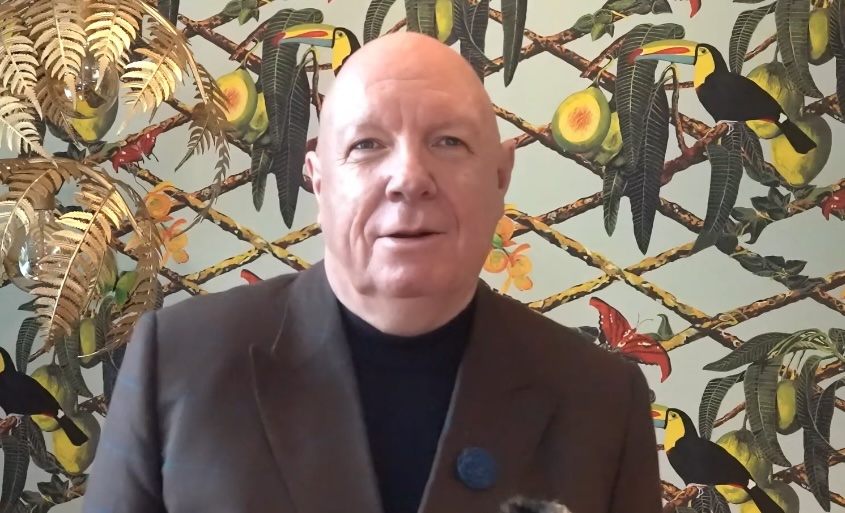Course Summary
While many countries, schooling systems and schools state commitment to climate change education the outcomes have been found to be not only poor but also counter-productive in terms of students’ actions and dispositions. This course will provide insight into the findings from a global review of climate change education with a focus on eco-anxiety an unanticipated consequence. It will also provide strategies for addressing this in schools and classrooms and provide examples of how this phenomenon is being minimised in different locations in the world.
Video transcript
Teachers are always, as part of their role, apart from teaching specific content, concerned about the wellbeing of their young people that they're responsible for. What's wonderful about this resource, it addresses not only the issue of eco-anxiety, but also eco-optimism, how to effectively support the well being of young people.
You will learn:
- About the growing phenomenon amongst young people of eco-anxiety and how this is leading to pessimism regarding futures and impacting negatively on current behaviours, attitudes and sense of agency;
- How to address this phenomenon through teaching and learning about climate change in ways that have been found to generate a sense of optimism, agency and action; and
- What can be done at the classroom, school, system and national levels to support students’ learning and acquisition of capabilities and dispositions conducive to “eco-optimism”.
Course time:
This course is expected to take between 30 to 45 minutes. Perfect for after work or during a spare period. You will have ongoing access via your user dashboard.
Accreditation:
All of our courses are mapped to the Australian Professional Teacher Standards (AITSL), and your completion can be logged as relevant, teacher-identified professional development activity with all Australian state teaching regulatory authorities. To do this, grab your certificate of completion from your personal dashboard once the course is complete.
- 2.1.2 Content and teaching strategies of the teaching area
- 3.2.2 Plan, structure and sequence learning programs
- 3.3.2 Use teaching strategies
- 5.1.2 Assess student learning
- 6.4.2 Apply professional learning and improve student learning
- 7.4.2 Engage with professional teaching networks and broader communities
Save
Course Content

Students and Eco-Anxiety: Teaching and Learning for Eco-Optimism
Course Instructor

Dr Phil Lambert PSM is an internationally recognised school education expert. He has extensive experience in education as a principal; inspector; Regional Director (Sydney) and General Manager of the Australian Curriculum, Assessment and Reporting Authority where he led the development of Australia’s first national curriculum. He has led major reviews and reforms, presented a number of papers and keynotes at national and international conferences, had a number of articles and occasional papers published in journals, and authored three books, the most recent being, ‘The Knowing and Caring Profession’. In 2023 he undertook a major review of Climate Change Education for UNESCO.
Frequently Asked Questions
Can I log this PD with my states teaching authority?
Yes! All of our courses are mapped to the Australian Professional Teacher Standards (AITSL), and your completion can be logged as relevant, teacher-identified professional development activity with all Australian state teaching regulatory authorities. To do this, grab your certificate of completion from your personal dashboard once the course is complete.
How long will this take to complete?
About 30 to 45 minutes - perfect for after work or during a spare period. You will have ongoing access via your user dashboard.
Will I get proof of completion?
You will get a Cool.org certificate when you finish to prove that you have completed this course. You can access this certificate (and your course progress!) anytime via your personal dashboard.
Is this course accredited?
All of our courses are mapped to the Australian Professional Teacher Standards (AITSL), and your completion can be logged as relevant, teacher-identified professional development activity with all Australian state teaching regulatory authorities. To do this, grab your certificate of completion from your personal dashboard once the course is complete.
- 2.1.2 Content and teaching strategies of the teaching area
- 3.2.2 Plan, structure and sequence learning programs
- 3.3.2 Use teaching strategies
- 5.1.2 Assess student learning
- 6.4.2 Apply professional learning and improve student learning
- 7.4.2 Engage with professional teaching networks and broader communities
Who are the instructors?
This course is designed in consultation with teachers, principals, psychologists, counsellors, scientists, and all manner of experts in the education field.
Cool.org's curriculum team continually reviews and refines our resources to be in line with changes to the Australian Curriculum and best educational practice, so you can be sure your learning is at the cutting edge of education theory.

Welcome back!
Don't have an account yet?
Log in with:
Create your free Cool.org account.
Many of our resources are free, with an option to upgrade to Cool+ for premium content.
Already have an account?
Sign up with:
By signing up you accept Cool.org's Terms and Conditions(Opens in new tab) and Privacy Policy(Opens in new tab).